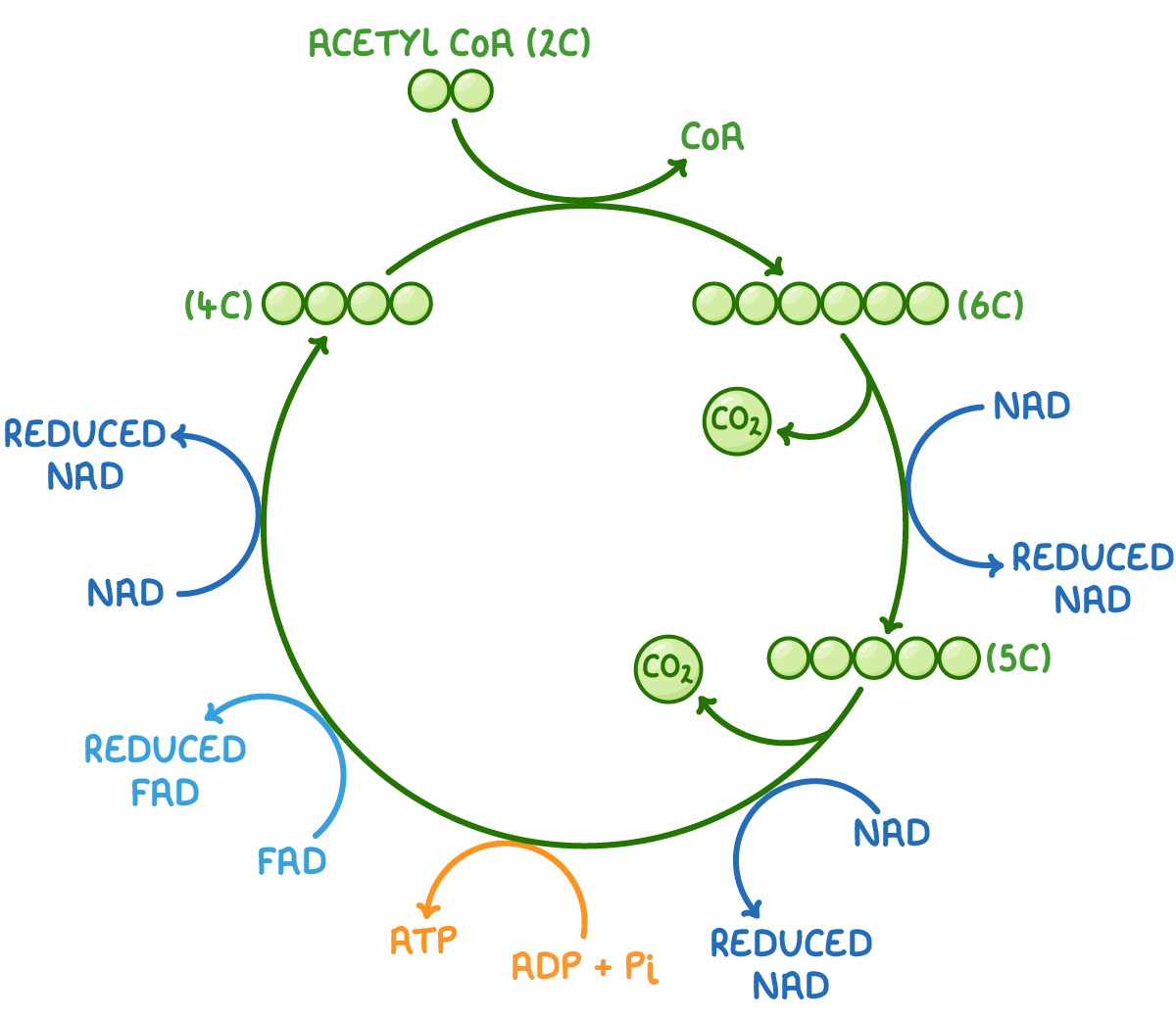5 Energy Transfers in and between organisms
1/10
There's no tags or description
Looks like no tags are added yet.
Name | Mastery | Learn | Test | Matching | Spaced |
|---|
No study sessions yet.
11 Terms
Describe what happens during photoionisation in the light-dependent reaction
light excites an electron in chlorophyll
the electron is lost
leaving the chlorophyll positively charged
Where does the light independent and the light dependent reaction occur
light dependent in the thylakoid membrane
light independent in the stroma
Describe the process of the light dependent reaction
Light energy is absorbed by chlorophyll in photosystem II, exciting electrons to a higher energy level.
These electrons are released from the chlorophyll (photoionisation) and passed along an electron transport chain (ETC) in the thylakoid membrane.
Photolysis of water occurs to replace the lost electrons, producing protons (H⁺), electrons (e⁻), and oxygen as a by-product.
As electrons move along the ETC, they lose energy, which is used to actively transport H⁺ ions into the thylakoid space, creating a proton gradient.
H⁺ ions move back into the stroma via ATP synthase, driving the synthesis of ATP from ADP and Pi (chemiosmosis).
The electron reaches photosystem I, is re-excited, and combines with NADP and a proton to form reduced NADP (NADPH)
Describe the process of photolysis
Photolysis is the splitting of water using light energy, producing electrons, protons (H⁺), and oxygen.
The electrons replace those lost from chlorophyll during photoionisation.
The protons contribute to the proton gradient used in ATP synthesis, and oxygen is a by-product
How is NADPH and ATP used in the Calvin cycle
Reduced NADP (NADPH) donates hydrogen to reduce glycerate-3-phosphate (GP) into triose phosphate (TP).
ATP provides energy for the reduction of GP to TP.
ATP is also used to regenerate ribulose bisphosphate (RuBP) from TP, allowing the cycle to continue.
Describe the Calvin cycle
Carbon dioxide reacts with ribulose bisphosphate (RuBP), catalysed by the enzyme RuBisCO.
This forms an unstable 6-carbon intermediate, which immediately splits into two molecules of glycerate-3-phosphate (GP).
GP is reduced to triose phosphate (TP) using hydrogen from reduced NADP and energy from ATP.
Some TP is converted into glucose (or other organic molecules like lipids and amino acids).
Most TP is used to regenerate RuBP, again using ATP.
For one molecule of glucose to be made, the cycle must turn six times, fixing six molecules of CO₂.
State the 4 stages of aerobic respiration and where they occur
Glycolysis – occurs in the cytoplasm of the cell.
Link reaction – takes place in the mitochondrial matrix.
Krebs cycle – also occurs in the mitochondrial matrix.
Oxidative phosphorylation – occurs across the inner mitochondrial membrane, with protons moving into the intermembrane space, and ATP produced in the matrix via ATP synthase.
Describe glycolysis
glucose is phosphorylated into glycerate phosphate using 2x ATP
Then splits into 2x triose phosphate
triose phosphate is oxidised to pyruvate, NAD → NADH and ADP → ATP
overall 2x pyruvate 2x NADH and net gain of 2x ATP
describe the link reaction
Pyruvate is oxidized, losing one carbon dioxide (CO₂).
The remaining 2-carbon fragment is bonded to coenzyme A to form acetyl CoA.
During this process, NAD⁺ is reduced to NADH.
describe the krebs cycle
Acetyl CoA combines with a 4-carbon compound (oxaloacetate) to form a 6-carbon compound (citrate).
Coenzyme A is released and reused in the link reaction.
Citrate undergoes decarboxylation, losing CO₂ to form a 5-carbon compound.
The 5-carbon compound is then decarboxylated again, losing another CO₂ to form a 4-carbon compound (oxaloacetate).
During these steps, NAD⁺ is reduced to NADH (twice).
FAD is reduced to FADH₂ and ATP is produced by substrate-level phosphorylation.

describe oxidative phosphorylation
NADH is oxidized, releasing NAD⁺, H⁺ (protons), and electrons.
The electrons are passed through the electron transport chain (ETC), a series of protein complexes in the inner mitochondrial membrane.
As the electrons move through the chain, energy is released, which is used to actively transport H⁺ ions from the mitochondrial matrix to the intermembrane space.
This creates an electrochemical gradient of H⁺ ions across the inner mitochondrial membrane.
The H⁺ ions flow back into the mitochondrial matrix via facilitated diffusion through the enzyme ATP synthase, which drives the phosphorylation of ADP to ATP.
Finally, oxygen acts as the final electron acceptor, combining with electrons and H⁺ ions to form water.